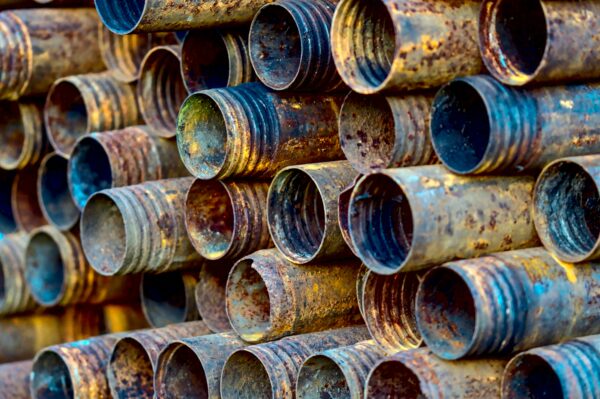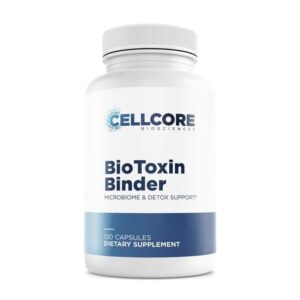
In my previous article, Is Your Water Holding You Back? I explored the fundamental importance of clean, safe drinking water. Yet, hidden within what appears to be clean, clear tap water often lies an insidious threat: lead. While largely invisible, tasteless, and odorless, lead contamination in our water supply poses significant risks to humans and overall American public health, silently eroding our well-being.
This article delves into the critical concerns surrounding lead in our water and its profound impact on our health. I will offer insights into how this silent contaminant infiltrates our homes and how we can avoid further exposure and remove it from our bodies with detoxing modalities.
The Source of the Problem: How Does Lead Get into Our Water?
Unlike some contaminants that enter water sources naturally, lead’s presence in drinking water is primarily a byproduct of human infrastructure. The widespread use of lead in plumbing materials for decades means that aging systems are a primary cause:

- Aging Infrastructure: Before 1986, lead pipes were commonly used for water service lines – the pipes connecting municipal water mains to individual homes. A metal alloy used in plumbing called “Lead Soldier” was used to create a strong seal between pipes to prevent leaks. Lead solder was also routinely used to join copper pipes. Also some brass faucets and fixtures have lead on their interior which leaches into your water from the tap.
- Corrosion: Over time, and as water flows through these lead-containing materials, it can cause the lead to leach from the pipes, solder, and fixtures into the water. The corrosivity of the water itself (influenced by its acidity, mineral content, and disinfectant levels) plays a significant role in how much lead leaches out. More corrosive water can dissolve lead more rapidly.
- Lead Service Lines: These direct connections to homes are often the largest contributors to lead in drinking water. If your home has a lead service line, every drop of water entering your house has the potential to come into contact with lead.
The Health Impacts of Lead Exposure: A Silent Attacker
Perhaps the most alarming fact about lead exposure is that there is no safe level. Even low levels of lead in the blood can have serious, irreversible health effects. Lead accumulates in the body over time, meaning consistent low-level exposure can eventually lead to significant health problems even in teenagers, adults and the elderly! Due to the effect of accumulation, lead exposure is more serious for vulnerable populations such as young children, pregnant women, and developing fetuses.
Here’s how lead can impact our health:
- Neurological Effects:
- Children: Developing brains are especially susceptible to lead’s neurotoxic effects. Exposure can lead to impaired cognitive development, reduced IQ, learning disabilities, behavioral problems (such as hyperactivity and impulsivity, sometimes mimicking ADHD), and damage to the nervous system.
- Adults: While less dramatic than in children, adults can experience nerve damage, memory problems, concentration difficulties, and headaches.
- Developmental and Reproductive Issues:
- Children: Lead can slow growth and development in children.
- Pregnant Women/Fetuses: Lead exposure during pregnancy increases the risk of miscarriage, premature birth, reduced birth weight, and developmental problems in the baby, as lead can cross the placental barrier.
- Men: Reduced sperm count
- Kidney Damage: Lead can impair kidney function, potentially leading to chronic kidney disease over time.
- Cardiovascular Effects: Research has linked lead exposure to increased blood pressure, hypertension, and a higher risk of cardiovascular disease.
- Anemia: Lead interferes with the body’s ability to produce hemoglobin, a protein in red blood cells essential for carrying oxygen, leading to anemia.
- Other Symptoms: General symptoms of lead exposure can be vague and non-specific. These include fatigue, abdominal pain, joint and/or muscle pain, and appetite loss, making diagnosis challenging without specific testing.
Identifying the Risk: How Do You Know if You Have Lead?
Because lead is invisible, tasteless, and odorless in water, it’s impossible to detect without testing. Professional water testing is the only reliable way to confirm if lead is in your drinking water.
- When to Test:
- If your home was built before 1986, when lead pipes and lead solder were common.
- If you know your home or neighborhood has lead service lines.
- If you have any concerns about your water quality, especially if you have young children or are pregnant.
- How to Test: Contact your local water utility; many offer free or low-cost lead testing kits or can recommend certified laboratories. You can also search for certified drinking water labs in your area.
- Checking Service Lines: While challenging, you might be able to visually inspect the pipe entering your home’s basement or utility area. A lead pipe is typically dull gray and soft enough to scratch with a key. However, identifying lead service lines often requires professional assessment.
Mitigating the Risk: Steps You Can Take
While complete lead pipe replacement is the ultimate solution, there are immediate steps you can take to reduce your exposure:
- Use Certified Water Filters: Install a water filter certified to remove lead. Look for filters that meet NSF/ANSI Standard 53 for lead reduction. These can be faucet-mounted, pour-through pitchers, or whole-house systems.
- Flush Your Taps: Before using water for drinking or cooking, especially if it has been sitting in your pipes for several hours (e.g., first thing in the morning or after work), flush your cold water tap for 30 seconds to 2 minutes. This clears out water that may have picked up lead from your plumbing.
- Clean Aerators: Regularly clean the aerator screens on your faucets. Small lead particles can accumulate there.
- Replace Lead-Containing Plumbing: If you identify lead solder, faucets, or fixtures, consider replacing them.
- Investigate Lead Service Line Replacement: This is the most effective long-term solution. Contact your local water utility to determine if your service line is lead and inquire about replacement programs or financial assistance. Many cities, including Boston, are actively working on lead service line replacement programs which may take years to complete.
- Community Advocacy: Stay informed about local initiatives and advocate for continued investment in infrastructure improvements to replace lead pipes in your community.
Supercharge your Body’s Detox Power
- Nourish with Antioxidants: Incorporate foods rich in potent antioxidants like Vitamin C (found in citrus, berries, bell peppers) and Vitamin E (in nuts, seeds, leafy greens). These compounds help neutralize harmful free radicals generated during detoxification.

- Key Detox Nutrients: Ensure adequate intake of elements like selenium (from Brazil nuts, tuna, sunflower seeds) and glutathione, often called the “master antioxidant,” which your body can produce or get from sulfur-rich foods like broccoli, garlic, and onions.

- Embrace Sweating: Sweating is a fantastic way to excrete toxins directly through your skin. Regular exercise that gets your heart rate up, or relaxing sessions in a sauna, can significantly enhance this process.

- Utilize Binders: Binders are incredible allies that help trap toxins in your digestive tract and carry them safely out of the body, preventing reabsorption. Cellcore’s HM-ET Binder is a binder that works by absorbing these chemicals in the gut. Chlorella, such as Biopure Chlorella Pyrenoidosa a nutrient-dense green algae, is another natural option that can bind to heavy metals and other toxins, aiding in their removal. In addition, Chlorella is a complete food rich in protein, vitamins, and minerals, including magnesium, potassium, Vitamins A, C, D, E, and K, and the full complement of B vitamins.
- External Support Practices: Epsom salt baths (rich in magnesium) can help draw out toxins, while dry brushing stimulates lymphatic flow, and castor oil packs applied to the liver area are popular methods for promoting liver and gut health.

A Call to Action for Safer Water
As I advocate to be a label detective to learn and make informed choices about your health, with lead I also urge you to be proactive. Sadly, gone are the days when we can have blind trust that things are working the way they should and we won’t be affected.
The concerns about lead in our water supply are significant and well-founded. It’s a silent threat with profound, often irreversible, health implications, particularly for our most vulnerable populations. However, understanding the sources of contamination and knowing the steps to take empowers us to protect ourselves and our families.
Safe, lead-free drinking water is not a luxury; it is a fundamental right. By testing our water, implementing mitigation strategies, and advocating for robust infrastructure improvements, we can collectively work towards a future where every tap delivers truly clean and healthy water, free from the hidden dangers of lead.


Share this blog post
You may also like
Tick Bites: The Perils Of Delayed Detection of Lyme Disease and How Timing is Key

Hidden Factors Affecting Blood Sugar Balance

Golden Glow Essentials: Holiday Gifts for Mind, Body, and Soul

Everyday Sources of Heavy Metals & What You Can Do

Beach Bod on the Go!

Glow From Within: The Golden Goddess Plate


